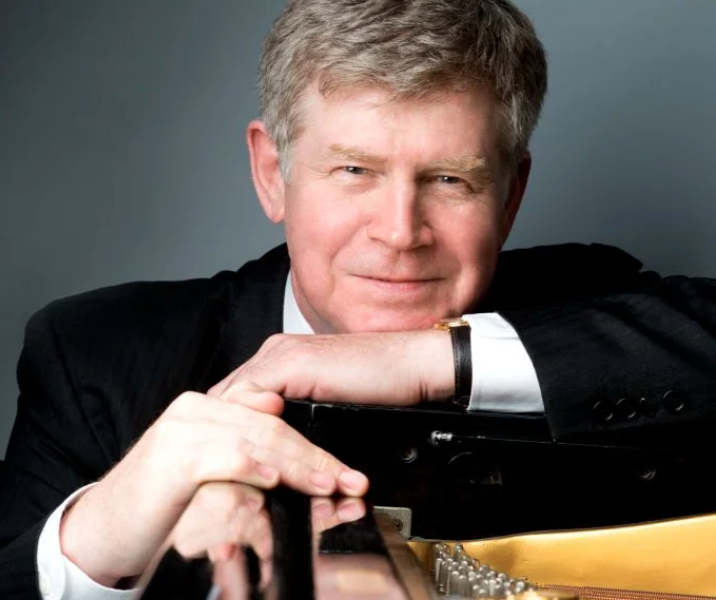Ian Hobson: The Complete Schumann Piano Works-“Love and Nature I” in Review
Ian Hobson, piano
Tenri Cultural Institute, New York, NY
February 17, 2023
Pianist Ian Hobson continues his Colossus stride through the complete piano music of Robert Schumann, on this occasion offering two contrasting Schumanns: 1) the purveyor of Biedermeyer coziness to a burgeoning amateur piano market and 2) the prickly innovator, with one of his most neglected oeuvres. The normally excellent program notes by Richard Dyer were wrong about one fact: Schumann did not compose 28 consecutive opuses of piano music, for Op. 24, 25, and 27 are Lieder sets- though there is sometimes a discrepancy between composition and publication.
The two opening works, which included the beloved Arabeske and the lesser-known Blumenstück, are thought to have been conceived as parts of the same compositional outburst of flower pieces, Guirlandes (Garlands). Schumann was trying, against his nature, to create works that would not scare off pianists and listeners. He even denigrated the Arabeske as “slight, for ladies.” However, this “slight” rondo possesses thematic unity among its compositional qualities.
In Mr. Hobson’s traversal of the Arabeske, I found myself wondering why so many phrase endings were being accented instead of “lifting,” and other issues of phrasing, accentuation, legato, tone, and volume then began to usurp my attention. Was Mr. Hobson trying deliberately to de-sentimentalize this work, which indeed has been, shall we say, abused, by so many well-meaning pianists over the years? It’s just that the piece (and the recital as a whole) craved more tenderness. Its marking is Leicht und zart (light and tender).
The Blumenstück, conceived at the same time as the Arabeske, is an episodic interleaving of two ideas (including the famous “Clara” cipher). It offers much less variety musically than the Arabeske, therefore it needs even more poetic fancy in the repetitions than we were given. Had Mr. Hobson misgauged the room? For Theodor Leschetizky’s piano sounded very loud in the intimate space of the Tenri Institute. Every once in a while, Hobson found one of the softer, more intimate colors, and it made one wish for much more.
Mr. Hobson decided to divide the Noveletten in half, the first four ending the first half, then the concluding four after intermission. These are problematic works, due to their length, and repetitive square phrasing and rhythm. Although they contain many felicities, they have been neglected by pianists, and rarely played as a complete set. The term novelette, borrowed from literature, denotes a form shorter than a novel, usually light and rather sentimental. Schumann himself regarded them rather as “extended, interconnected adventure stories,” and he incorporated some of his intense study of Bach in the form of canons and other imitative textures.
There are eight character pieces, including Schumann’s favorite masked ball scene (No. 4), and an energetic polonaise (No. 5) that is extremely similar to one of Schumann’s swaggering macho songs Der Hidalgo (Op. 30, No. 3). Here Mr. Hobson’s approach conveyed some of the preening and boasting of a confident suitor. In some of the Novelettes, he was more hectoring than jovial, and contrasting lyrical episodes were shortchanged as to their intimacy.
For me, Mr. Hobson made us wait for his triumph in this group. The final Novelette was given a masterly rendition, with all the color and contrast one could wish for. In the moment when the Stimme aus der Ferne (Voice from Afar) appears, which is actually a quote from one of Clara’s own works, we were given all the haunting poetry this music is capable of in the hands of a great pianist. I tend to think of Mr. Hobson as a great “organizer,” that is, he doesn’t tend to linger, but has a great capacity to put wayward things together into larger wholes—not a bad quality for sure.
Dear Mr. Hobson, you know how very much I (we) esteem your great skill and commitment, but please “try a little (more) tenderness.”

